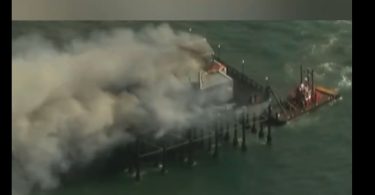These formations that multiply across the Yucatan peninsula amount to over 2400. El Pit, and Dos Ojos, the most popular amongst tourists and scuba divers, can be found about a 40 minute drive from Playa del Carmen. Recently, researchers found a connection between the Dos Ojos and Sac Actun cave systems, the latter absorbing the former, and becoming the largest submerged cave system in the world.
In Hispanic America we use the name “cenote” to describe natural sink holes that have formed over time after sea levels dropped during the last Ice Age, exposing the Yucatan Peninsula. Geologists explain that with the retreat of ocean waters, the limestone bedrock of the Yucatan became subject to the effects of rain and collapsed, forging these labyrinths of rock. Cenotes are categorized into open, semi-open, and closed.
El Pit is an enormous open cenote in the form of a cylinder with a maximum depth of 131 feet (40 meters). At 90 feet (28 meters) sits a cloud of hydrogen sulfate, formed by the decomposition of tree branches and other plant life that falls into the hole over the years. This intersection of cave and vegetation generates confusion, blurring the two elements: earth and water. The cloud recreates a spectral marine scene, and together with the halocline (change in salinity of the water) provides the scuba diver with the sensation of entering the underworld.
Close to El Pit, the Dos Ojos cenote can be found, known as the mother of all cenotes after its union to the Sac Actun system. This cenote has 26-foot columns (8 meters) and does not exceed 50 feet in depth (15 meters), making for an easy immersion for any diver that has buoyancy control and is willing to experience total darkness during the dive.
Due to its transparency, the water in this cavern offers perfect visibility and, at a constant temperature of 75 degrees Fahrenheit (24 Celsius), makes for a pleasurable immersion. The itinerary is followed with flashlights, allowing for the surveying of rock formations, stalagmites, and ancient fossil remains amongst other peculiarities. The dive slowly transforms into the experience of a dream. “The cavernous openings allow sporadic sun rays to penetrate into the depths forming a curtain of light, awakening us to the presence of the surface, and to the fact that we are submerged in sacred waters” says Miguel Abularch from Scuba Caribe Buceo.
The word “dzonoot” belongs to the Mayan Yucatec language (Guatemala and Yucatan Peninsula). It is a Latinized word, as the Mayan speakers used ideograms to write. The etymological meaning of dzonoot refers to the sacred, what “lies beyond”. But this “beyond” isn’t an empty place in any mythology. It isn’t immaterial, imperceptible nor indescribable, but rather the complete opposite to what is inhabited by ghosts, guardians, and concrete and material spirits. For them, there clearly was a submerged population under these waters, inhabited by demons and their servants; the Twelve Gods (or Lords) of Death. This is the reason why, for decades, the cenotes were subject to offerings and sacrifices, and are to this day of great archeological value in deciphering this complex pre-classic system through fossil remains. Only recently, after 14 years of research, the “Great Maya Aquifer” specialists have managed to discover the connection between Sac Actun (164 miles/263 km) and Dos Ojos (52 miles/84 km), forming a flooded cave of 216 miles (347 km), the largest on the planet.
This place is not only a natural wonder, but is also an area inhabited by mysteries still to be revealed. To discover them, the possibility is to submerge ourselves. For professional scuba divers and amateur visitors alike, it is mandatory to be accompanied by a certified guide with the appropriate safety gear and procedures to avoid the risk of being trapped by the walls that block the surface. However, it is apt for divers of all levels, so long as they adjust their depth in accordance to their training.























